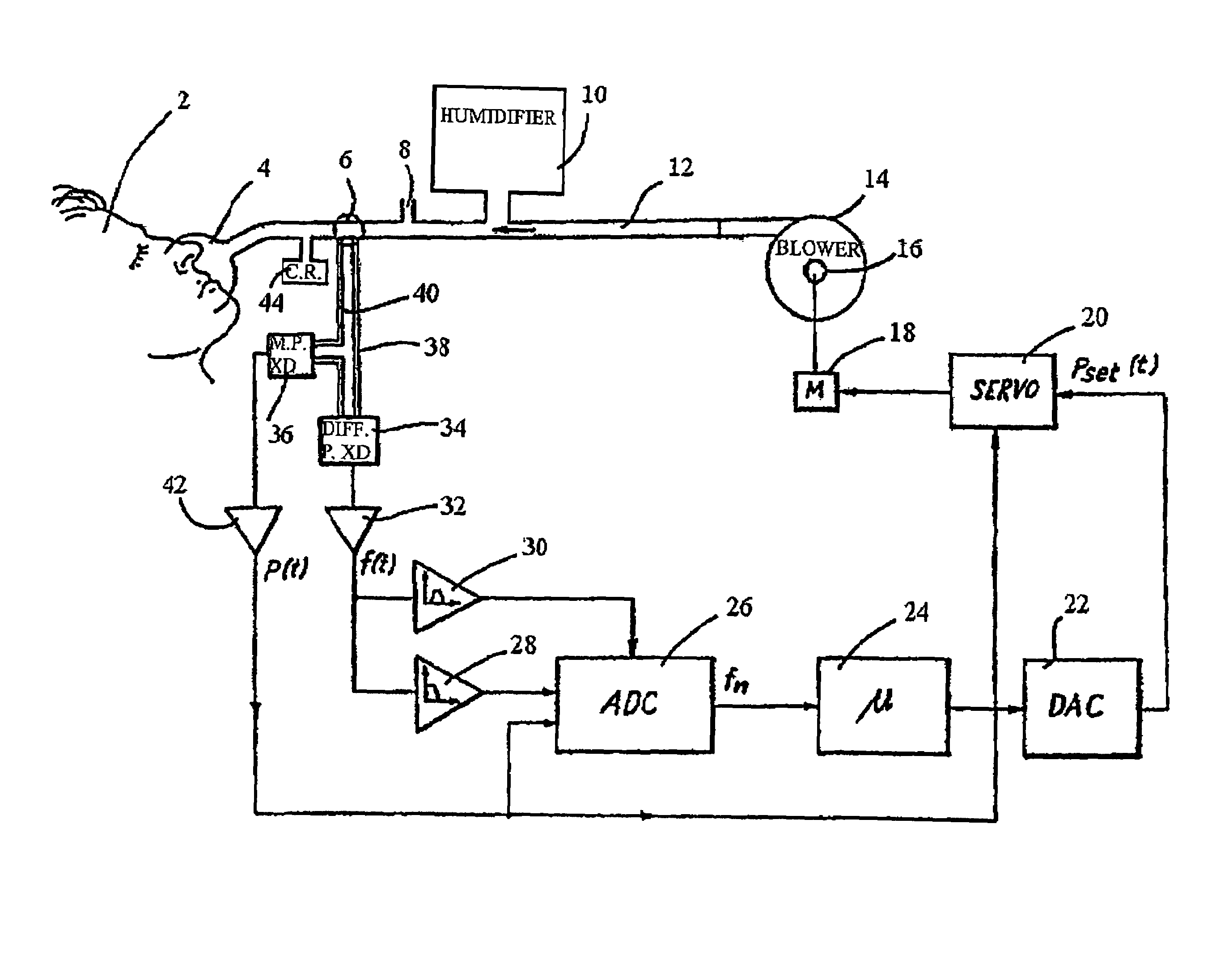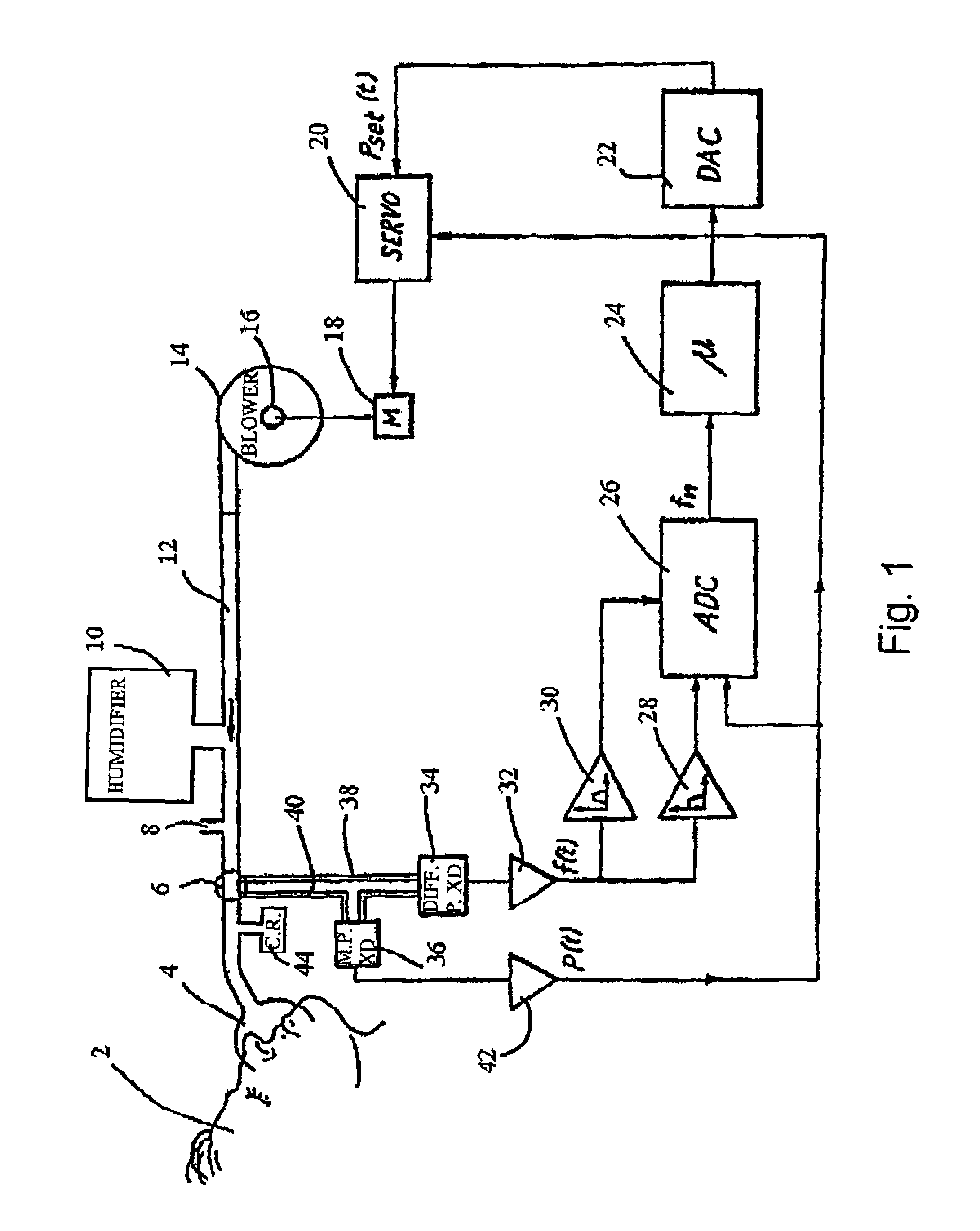Humidification for continuous positive airway pressure systems
a positive airway and humidification technology, applied in mechanical equipment, valves, respirators, etc., can solve the problems of decreased blood oxygenation, congestion, sleep disruption, etc., and achieve the effect of increasing the relative humidity of the surrounding air, vital to patient comfort and optimum health, and adding cost and tim
- Summary
- Abstract
- Description
- Claims
- Application Information
AI Technical Summary
Benefits of technology
Problems solved by technology
Method used
Image
Examples
Embodiment Construction
[0025]FIG. 1 describes a preferred embodiment for a complete CPAP system with active humidification. This system includes the attached non-heat, active humidifier further comprised of a condenser coil for collecting and disposing of condensation before the humidified air reaches the subject. Optionally, the CPAP system may include condensation reservoir separate from the humidifier instead of an attached condensation coil.
[0026]In FIG. 1, the subject 2 is wearing a mask 4, preferably the nose mask 4 and / or face mask 4, sealed to his or her face. Breathable gas in the form of fresh air, or oxygen enriched air, enters the mask 4 by flexible tubing 12 which, in turn, is connected to a motor driven blower 14 to which there is provided an air inlet 16. The motor 18 for the blower is controlled by a motor-servo unit 20 to commence, increase or decrease the air pressure supplied to the mask 4 as CPAP treatment. The mask 4 also includes an exhaust port 8 that is close to the junction of the...
PUM
 Login to View More
Login to View More Abstract
Description
Claims
Application Information
 Login to View More
Login to View More - R&D
- Intellectual Property
- Life Sciences
- Materials
- Tech Scout
- Unparalleled Data Quality
- Higher Quality Content
- 60% Fewer Hallucinations
Browse by: Latest US Patents, China's latest patents, Technical Efficacy Thesaurus, Application Domain, Technology Topic, Popular Technical Reports.
© 2025 PatSnap. All rights reserved.Legal|Privacy policy|Modern Slavery Act Transparency Statement|Sitemap|About US| Contact US: help@patsnap.com



